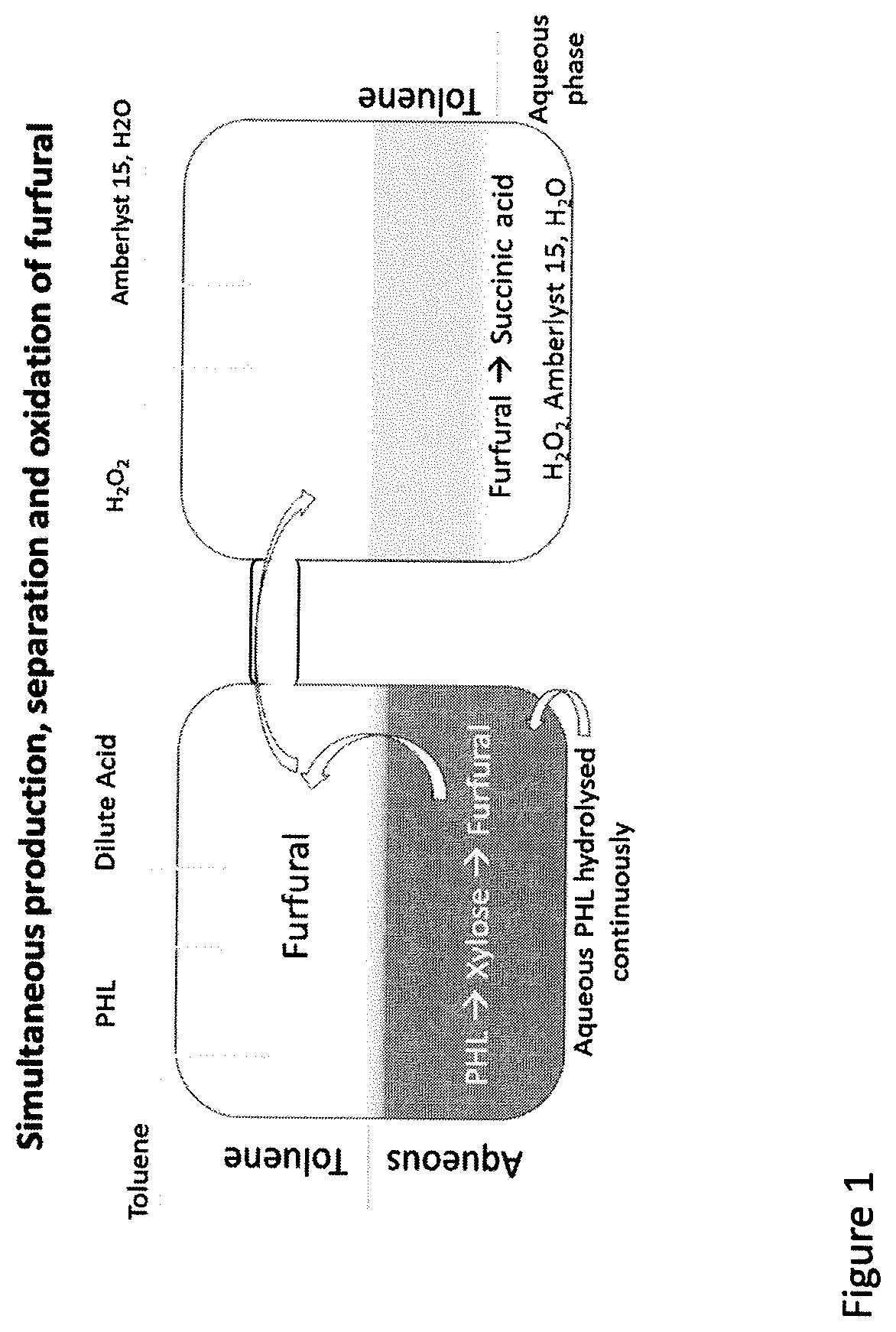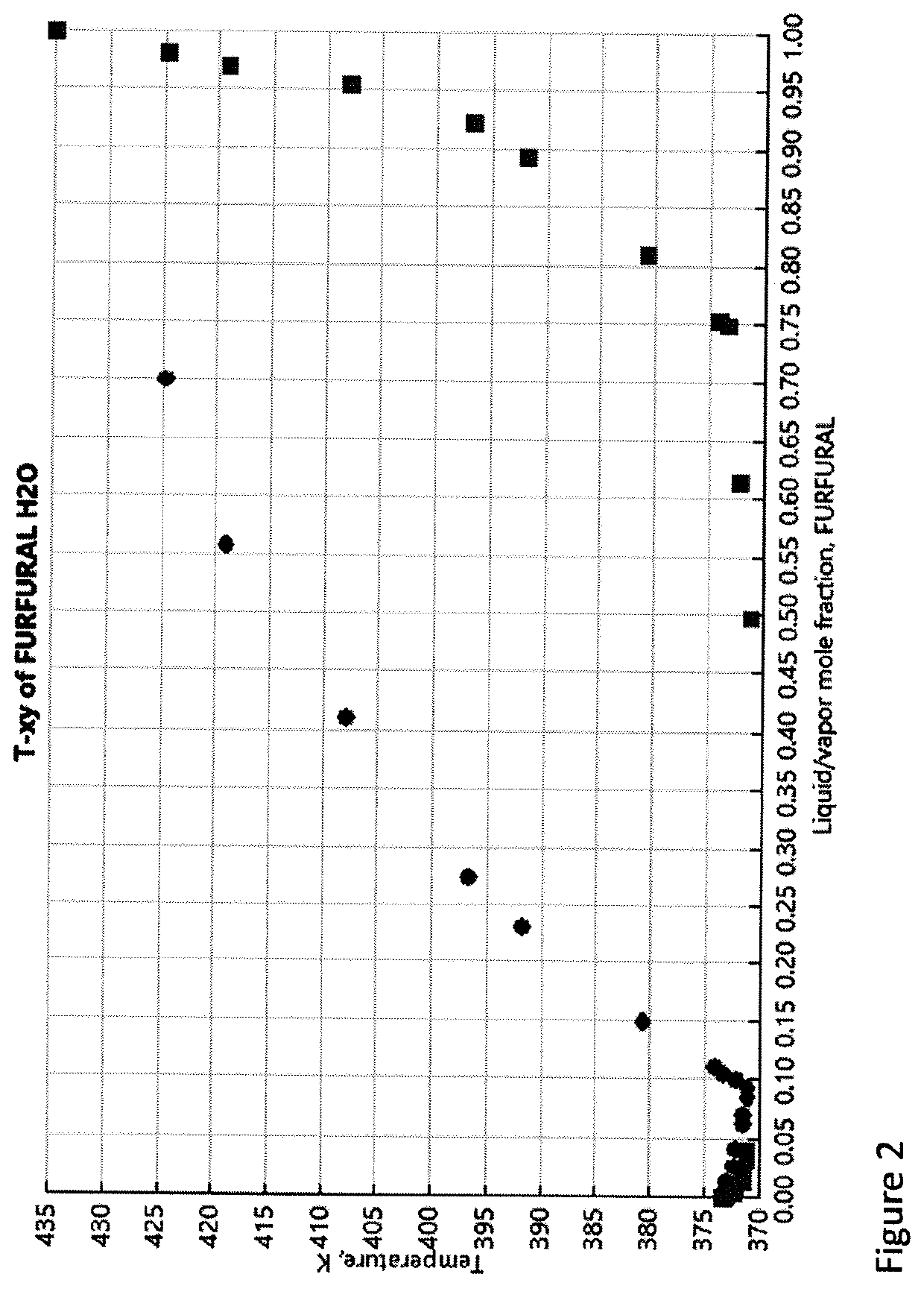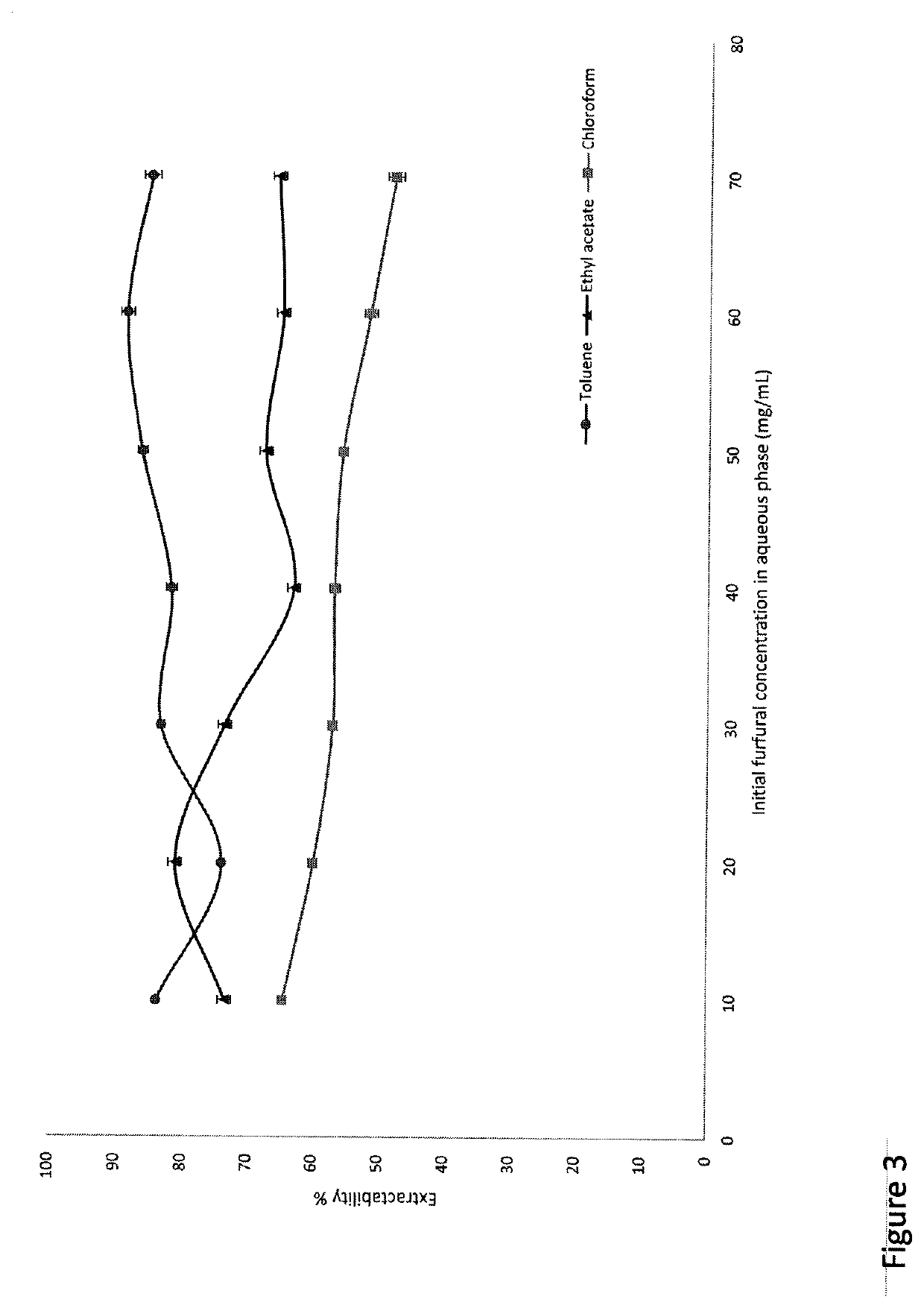Conversion of Wood Based Hemicellulose Prehydrolysate into Succinic Acid Using a Heterogeneous Acid Catalayst in a Biphasic System
a technology of heterogeneous acid catalysis and hemicellulose, which is applied in the direction of organic compounds/hydrides/coordination complex catalysts, organic chemistry, and carboxylic preparations by oxidation. it can solve the problems of not being able to achieve such a growth in production, expensive catalysts, and not being able to achieve industrial production
- Summary
- Abstract
- Description
- Claims
- Application Information
AI Technical Summary
Benefits of technology
Problems solved by technology
Method used
Image
Examples
Embodiment Construction
[0020]Unless defined otherwise, all technical and scientific terms used herein have the same meaning as commonly understood by one of ordinary skill in the art to which the invention belongs. Although any methods and materials similar or equivalent to those described herein can be used in the practice or testing of the present invention, the preferred methods and materials are now described. All publications mentioned hereunder are incorporated herein by reference.
[0021]The aim of this study was to avoid the side reactions and enhance the conversion of furfural to succinic acid in good yields. Conversion of hemicellulose prehydrolysate containing xylose to succinic acid with the use of a biphasic system is described herein.
[0022]As will be appreciated by one of skill in the art, hemicellulose streams contain substantial amounts of xylose. As discussed herein, xylose is a key reactant for the conversion. Commercially available xylose is purified and refined, making it expensive; Howe...
PUM
| Property | Measurement | Unit |
|---|---|---|
| reaction time | aaaaa | aaaaa |
| mole ratio | aaaaa | aaaaa |
| temperature | aaaaa | aaaaa |
Abstract
Description
Claims
Application Information
 Login to View More
Login to View More - R&D
- Intellectual Property
- Life Sciences
- Materials
- Tech Scout
- Unparalleled Data Quality
- Higher Quality Content
- 60% Fewer Hallucinations
Browse by: Latest US Patents, China's latest patents, Technical Efficacy Thesaurus, Application Domain, Technology Topic, Popular Technical Reports.
© 2025 PatSnap. All rights reserved.Legal|Privacy policy|Modern Slavery Act Transparency Statement|Sitemap|About US| Contact US: help@patsnap.com



